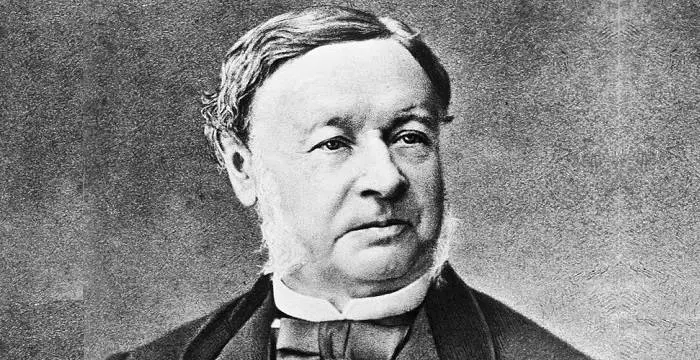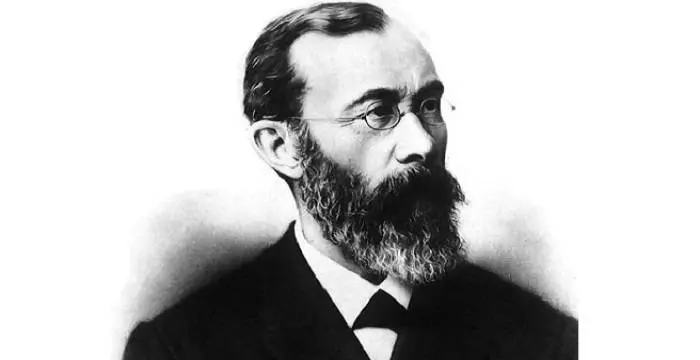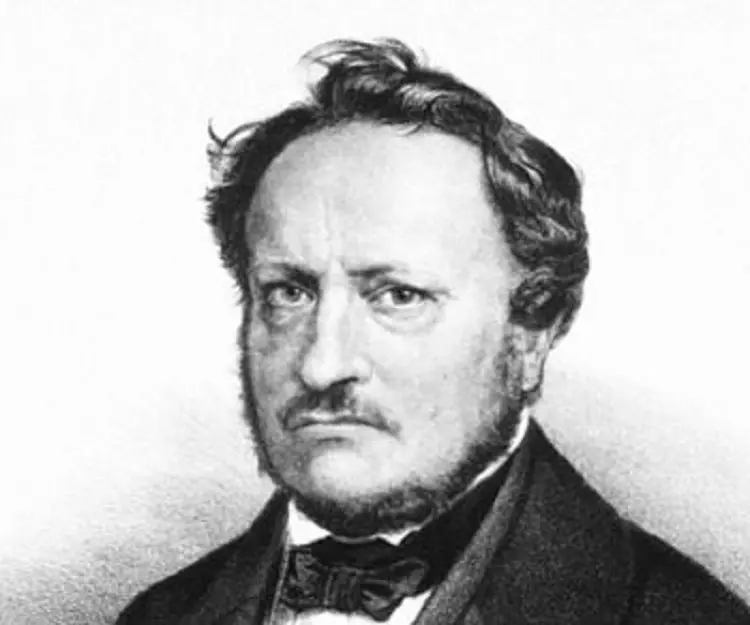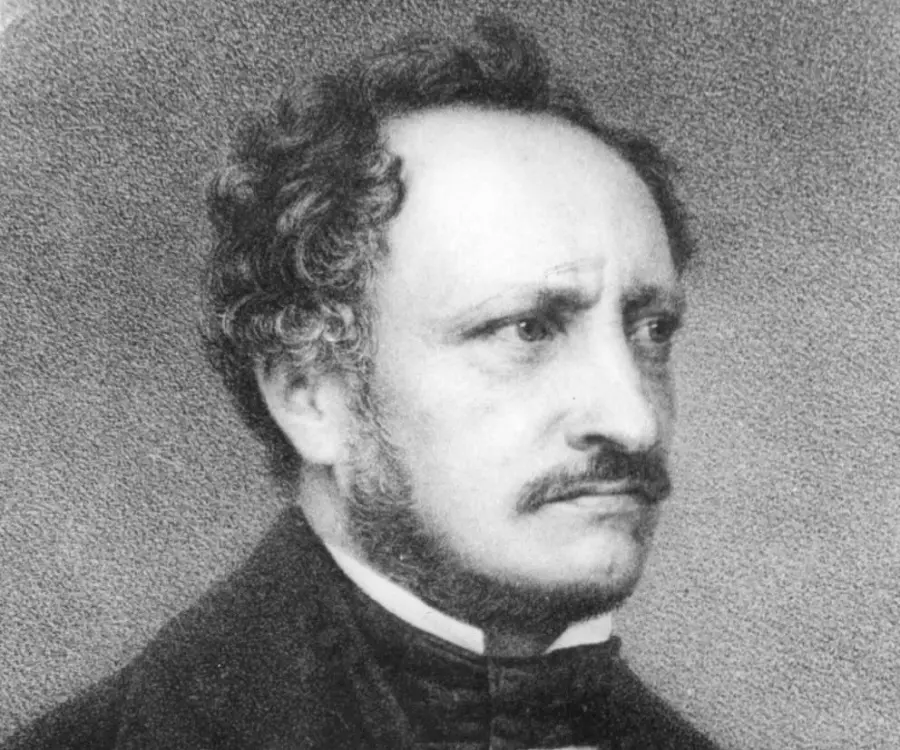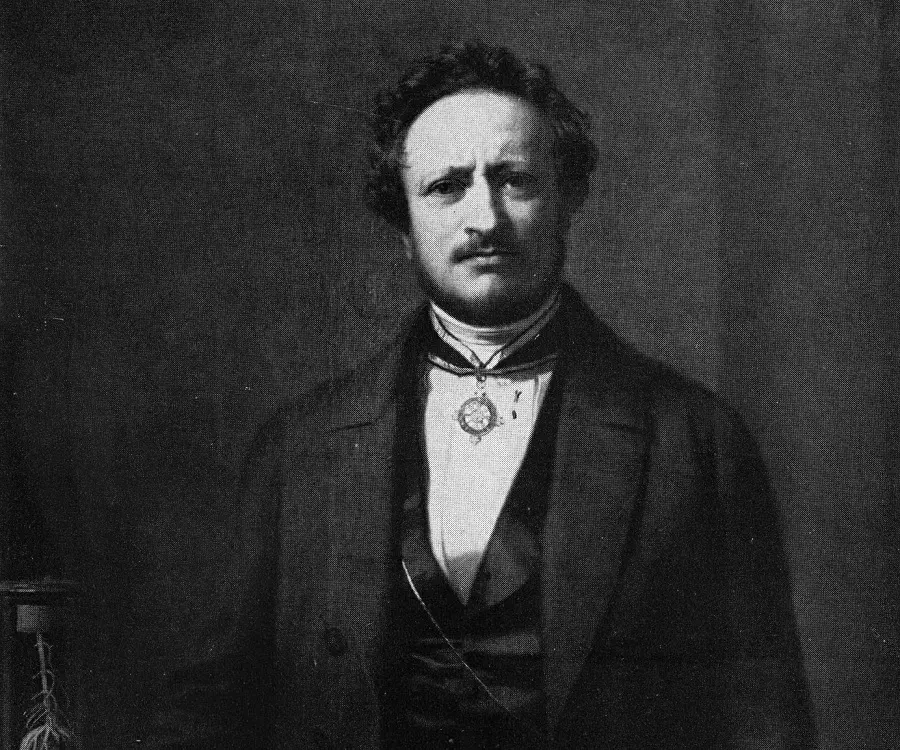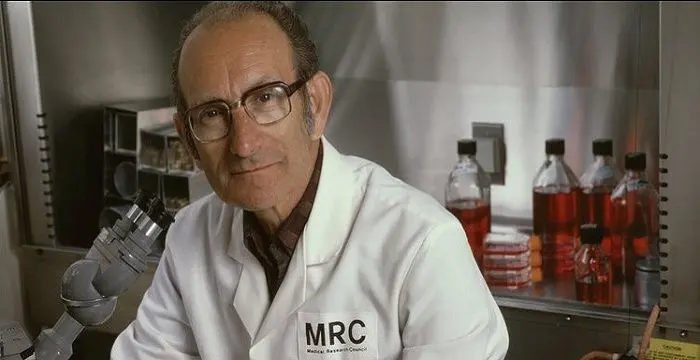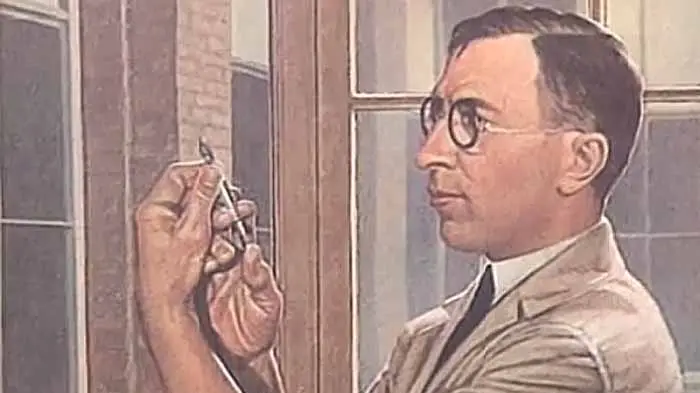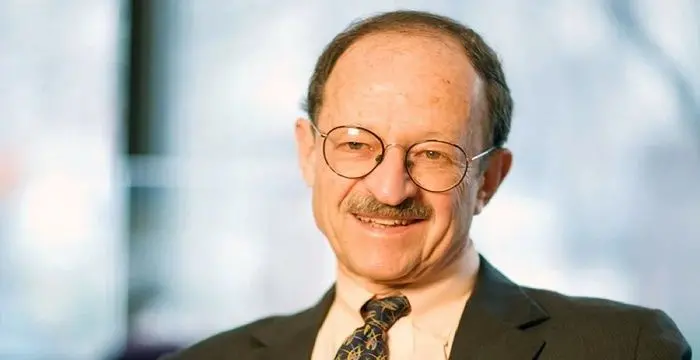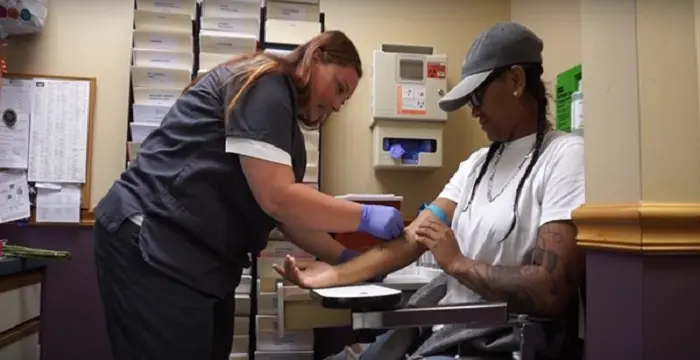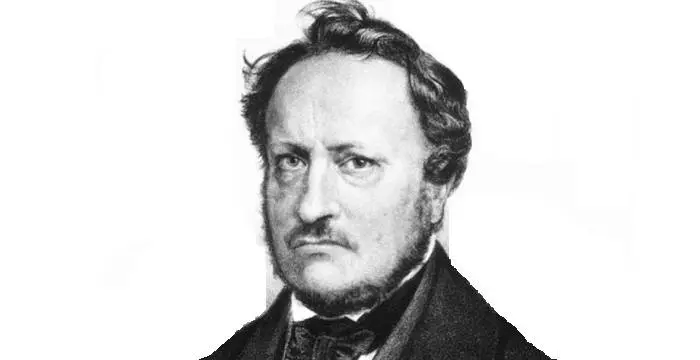
Johannes Peter Müller - Medical Scientists, Timeline and Life
Johannes Peter Müller's Personal Details
Johannes Peter Müller was a German physiologist and comparative anatomist
| Information | Detail |
|---|---|
| Birthday | July 14, 1801 |
| Died on | April 28, 1858 |
| Nationality | German |
| Famous | Scientists, Medical Scientists, Physiologists |
| Birth Place | Koblenz, Germany |
| Gender | Male |
| Sun Sign | Cancer |
| Born in | Koblenz, Germany |
| Famous as | Physiologist |
| Died at Age | 56 |
// Famous Physiologists
Theodor Schwann
Theodor Schwann was a German physiologist who discovered the Schwann cells in the peripheral nervous system. This biography of Theodor Schwann provides detailed information about his childhood, life, achievements, works & timeline.
Wilhelm Wundt
Wilhelm Wundt was a renowned doctor who conducted pioneering studies on experimental psychology. To know more about his childhood, career, profile and timeline read on
Charles Best
Charles Best was a great scientist and a renowned physiologist who is remembered for being the co-discoverer of insulin. Read this biography to learn about his profile, childhood, life and timeline.
Johannes Peter Müller's photo
Who is Johannes Peter Müller?
Johannes Peter Müller was a German physiologist and comparative anatomist, considered to be the leading natural philosopher of the 19th century. He was best remembered for his book ‘Handbuch der Physiologie des Menschen für Vorlesungen’, 2 vol. (1834–40; Elements of Physiology) which became the leading textbook in the medical field. Born to a shoemaker, his father initially planned to train him in leather crafting. However, one of his teachers discovered his talent in mathematics and classical languages and persuaded his father to send him to the Bonn University. By then, Müller had become interested in natural sciences and medicine. At Bonn, he enrolled in medical studies and three years later graduated with a medical degree. He continued further studies at the Berlin University where famous anatomist Rudolphi motivated him to take up microscopic studies. In 1824, he acquired the Lecturership in physiology and comparative anatomy at the University of Bonn; two years later he was appointed Associate Professor, and in 1830 he became a full Professor. Next, he was granted the prestigious position of Medical Professor at the Berlin University and continued in the role for 25 years. He was an eminent teacher and some of his famous students included cellular pathologist Rudolf Virchow and physiologist physicist Hermann Helmholtz. As a researcher, his vast knowledge in the field grabbed the attention of different scholars. In personal life, he suffered from frequent bouts of depression that often left him incapable of work.
// Famous Scientists
Juliane Koepcke
Juliane Koepcke is a German-Peruvian biologist, who was the lone survivor among the 92 passengers and crew of the ill-fated LANSA Flight 508 that crashed in the Peruvian rainforest on 24 December 1971. Know more about her life in this biography.
Henry Cavendish
Henry Cavendish was a theoretical chemist and physicist, renowned for discovery of hydrogen and calculation of the mass of earth. To know more about his childhood, profile, timeline and career read on
Konstantin Tsiolkovsky
Konstantin Tsiolkovsky was a Russian rocket scientist and a pioneer of astronautics. This biography provides detailed information about his childhood, family, personal life, career, achievements, etc.
Childhood & Early Life
Johannes Peter Müller was born on 14 July 1801, in Koblenz, Germany, into a poor family. His father was a shoemaker.
Müller’s father wanted him to continue his family trade and was about to apprentice him to a saddler, when a Prussian educational reformer, Johannes Schulze, noticed Müller’s skills in mathematics and classical languages and persuaded Müller’s father to send him to the Bonn University.
In 1819, he enrolled in the Bonn University to study medicine. Three years later in 1822, he received his medical degree with a doctoral thesis on animal movement patterns, especially in insects.
He next studied at the Berlin University where he was encouraged to discard those systems of physiology which were not based on a careful study of nature. The Berlin anatomist Carl Asmund Rudolphi inspired him to take up microscopic studies.
Soon, he became an expert microscopist. In 1824, after he had passed the Prussian state medical examination and returned to Bonn, he received the Frauenhofer microscope from Rudolphi to carry out his future researches.
Career
Meanwhile, in October 1824, he delivered a lecture ‘Uber das Bedürfnis der Physiologie nach einer philosophischen Naturbetrachtung’ (On the Need of Physiology for a Philosophical Contemplation of Nature). In the lecture he defined his scientific strategy of merging careful observation of natural forms with limited philosophical theorization.
Through his years of research at Bonn he provided information in various segments of physiology, especially the voice, speech, hearing, visual, circulatory, endocrine, and reproductive systems. He also elucidated the chemical and physical properties of lymph and blood.
In 1826, he published ‘Zur vergleichenden Physiologie des Gesichtssinnes des Menschen und der Thiere’ (On the Comparative Physiology of Vision in Men and Animals). It described human binocular vision and the structure of insect eyes.
In 1826, he also published ‘Ueber die phantastischen Gesichtserscheinungen’ (On Fantasy Images), which was a study of optical illusions. His work showed that the visual system is active recorder of external events.
Through his studies of the nervous system, he elucidated that nerves are not merely passive conductors of outer stimuli. In ‘Handbuch der Physiologie des Menschen’ (Elements of Physiology), he explained that each nerve responds to stimuli only in a specific way.
He conducted detailed comparative studies of the endocrine and reproductive systems and these observations were published in ‘De glandularum secernetium and Bildungsgeschichte der Genitalien’ in 1830. He explained that glands, and not blood vessels, were responsible for secretions that control bodily functions. He also identified the blood vessels responsible for male erection.
He experimentally demonstrated physician Charles Bell’s and physiologist François Magendie’s theory that the dorsal roots of spinal nerves carry sensory fibres, whereas the ventral ones carry motor fibres.
In 1832, Rudolphi died and Müller expressed a desire to acquire the prestigious position of Berlin professorship. He finally received the position in 1833 and continued till 1858. He worked hard to make Berlin a center for comparative anatomical studies.
As a medical professor at Berlin, he taught physiology, human anatomy, sensory anatomy, comparative anatomy, and pathological anatomy. He also partly managed the medical students' dissecting laboratory and scrutinized Prussian candidates in quest of medical degrees.
One of his biggest preoccupations at Berlin was to restore the university’s anatomical museum. He was passionate about gathering all known animal forms, in an effort to understand how life was organized.
Between 1833 and 1844, he consolidated his enormous physiological knowledge in the significant publication ‘Handbuch der Physiologie’. It went on to become the most important textbook in the field for much of the 19th century.
Meanwhile in 1834, he established the ‘Archiv für Anatomie, Physiologie und wissenschaftliche Medicin’. The prestigious journal contained annual reports on physiological and anatomical research progresses being made all over Europe. In 1834, he was also elected as a foreign member of the Royal Swedish Academy of Sciences.
After his assistant, Theodor Schwann demonstrated the cell as the basic unit of animal body, Müller studied the cellular structure of tumours with the help of a microscope. His observations were published in ‘Ueber den feineren Bau der krankhaften Geschwülste’ (On the Fine Structure of Pathological Tumours) in 1838.
He also distinguished marine organisms and developed a new classificatory system for the myxinoids (hagfishes) and plagiostomes (cartilaginous fishes such as sharks) in the late 1830s.
In the 1840s, he continued his research on marine organisms such as cyclostomes (lampreys) and ganoid (scaly) fishes. He researched in depth about the echinoderms - animals with radial symmetry such as starfishes.
Apart from teaching and conducting research, he also executed heavy administrative duties. He served as Dean of the Medical Faculty in 1835-36 and 1842-43, and Rector of the Berlin University in 1838-39 and 1847-48.
Throughout his career, he often suffered periods of severe depression. The final spell of hopelessness occurred after a harrowing shipwreck in 1855 in which one of his young students drowned. He felt personally accountable for the student’s death and never completely recovered from the guilt.
Even though he continued teaching and researching after this incident, his health began to deteriorate. He increasingly became dependent on opium to lessen his abdominal pains and fight insomnia.
During his lifetime, he mentored various famous scientists and physiologists such as Hermann von Helmholtz, Emil du Bois-Reymond, Theodor Schwann, Friedrich Gustav Jakob Henle, Carl Ludwig, Ernst Haeckel, et al.
Major Works
Müller’s most important discovery was his finding that each of the sensory organs responds to different kinds of stimuli in their own unique way. His research on vision elucidated that the eye as a sensory organ not only responds to external optical stimuli but also internal stimuli triggered by the imagination.
He studied the journey of impulses from afferent nerves to efferent nerves, further explaining the concept of reflex action. He thus confirmed the law named after Charles Bell and François Magendie.
His publication ‘Über den feineren Bau und die Formen der krankhaften Geschwülste’ (On the Nature and Structural Characteristics of Cancer and of Those Morbid Growths Which May Be Confounded with It) established pathological histology as an autonomous branch of science.
A bronze statue by Joseph Uphues was erected at Koblenz in 1899, in Müller’s memory.
Personal Life & Legacy
In April 1827, Müller married the gifted musician Nanny Zeiller.
He was fatigued from his full time teaching profession, wide-ranging researches, and the publication of books. In 1827, 1840, and 1848, he suffered bouts of depression that left him incapable of working for several months.
He died on 28 April 1858, in Berlin, at the age of 56. His recurrent depression is often speculated to be the cause of his death.
Trivia
Initially, he wanted to become a priest. However, he gradually became interested in natural sciences and turned to medicine.
// Famous Medical Scientists
Cesar Milstein
Cesar Milstein was an Argentinian biochemist who received the Nobel Prize for his discovery of monoclonal antibody. Explore this biography to get details about his life, career and scientific discoveries.
Frederick Banting
Frederick Banting was a Canadian medical scientist and physician who won the Nobel Prize for discovering insulin. Check out this biography to know about his childhood, family life, achievements and other facts related to his life.
Harold E. Varmus
Harold E. Varmus is an American scientist who won a share of the 1989 Nobel Prize in Physiology or Medicine. This biography of Harold E. Varmus provides detailed information about his childhood, life, achievements, works & timeline.
Johannes Peter Müller's awards
| Year | Name | Award |
|---|---|---|
Other | ||
| 0 | Copley Medal | |
Johannes Peter Müller biography timelines
- // 14th Jul 1801Johannes Peter Müller was born on 14 July 1801, in Koblenz, Germany, into a poor family. His father was a shoemaker.
- // 1819 To 1822In 1819, he enrolled in the Bonn University to study medicine. Three years later in 1822, he received his medical degree with a doctoral thesis on animal movement patterns, especially in insects.
- // 1824Soon, he became an expert microscopist. In 1824, after he had passed the Prussian state medical examination and returned to Bonn, he received the Frauenhofer microscope from Rudolphi to carry out his future researches.
- // Oct 1824Meanwhile, in October 1824, he delivered a lecture ‘Uber das Bedürfnis der Physiologie nach einer philosophischen Naturbetrachtung’ (On the Need of Physiology for a Philosophical Contemplation of Nature). In the lecture he defined his scientific strategy of merging careful observation of natural forms with limited philosophical theorization.
- // 1826In 1826, he published ‘Zur vergleichenden Physiologie des Gesichtssinnes des Menschen und der Thiere’ (On the Comparative Physiology of Vision in Men and Animals). It described human binocular vision and the structure of insect eyes.
- // 1826In 1826, he also published ‘Ueber die phantastischen Gesichtserscheinungen’ (On Fantasy Images), which was a study of optical illusions. His work showed that the visual system is active recorder of external events.
- // Apr 1827In April 1827, Müller married the gifted musician Nanny Zeiller.
- // 1830He conducted detailed comparative studies of the endocrine and reproductive systems and these observations were published in ‘De glandularum secernetium and Bildungsgeschichte der Genitalien’ in 1830. He explained that glands, and not blood vessels, were responsible for secretions that control bodily functions. He also identified the blood vessels responsible for male erection.
- // 1833 To 1844Between 1833 and 1844, he consolidated his enormous physiological knowledge in the significant publication ‘Handbuch der Physiologie’. It went on to become the most important textbook in the field for much of the 19th century.
- // 1834Meanwhile in 1834, he established the ‘Archiv für Anatomie, Physiologie und wissenschaftliche Medicin’. The prestigious journal contained annual reports on physiological and anatomical research progresses being made all over Europe. In 1834, he was also elected as a foreign member of the Royal Swedish Academy of Sciences.
- // 1838After his assistant, Theodor Schwann demonstrated the cell as the basic unit of animal body, Müller studied the cellular structure of tumours with the help of a microscope. His observations were published in ‘Ueber den feineren Bau der krankhaften Geschwülste’ (On the Fine Structure of Pathological Tumours) in 1838.
- // 1855Throughout his career, he often suffered periods of severe depression. The final spell of hopelessness occurred after a harrowing shipwreck in 1855 in which one of his young students drowned. He felt personally accountable for the student’s death and never completely recovered from the guilt.
- // 28th Apr 1858He died on 28 April 1858, in Berlin, at the age of 56. His recurrent depression is often speculated to be the cause of his death.
- // 1899A bronze statue by Joseph Uphues was erected at Koblenz in 1899, in Müller’s memory.
// Famous Cancer Celebrities peoples
Jacob Elordi
Jacob Elordi is an Australian actor. Let’s take a look at his childhood, family, personal life, career, etc.
Riele Downs
Riele Downs is a Canadian-American actress & Musical.ly star. Let’s take a look at her family and personal life including age, birthday, net worth, boyfriends and fun facts.
Yammy Xox
Check out all that you wanted to know about Yammy Xox, the famous British YouTube Personality; her birthday, her family and personal life, her boyfriends, fun trivia facts and more.
Kaylee Quinn
Kaylee Quinn is an American dancer, model, and actress. Let’s have a look at her family and personal life including age, date of birth, net worth, relationships, and fun facts.
Sophia Montero
Sophia Montero is an American singer and YouTuber. Let’s have a look at her family and personal life including age, date of birth, net worth, relationships, and fun facts.
Domo Wilson
Check out all that you wanted to know about Domo Wilson, the famous American Vlogger & YouTube Personality; her birthday, her family and personal life, fun trivia facts and more.
Johannes Peter Müller's FAQ
What is Johannes Peter Müller birthday?
Johannes Peter Müller was born at 1801-07-14
When was Johannes Peter Müller died?
Johannes Peter Müller was died at 1858-04-28
Which age was Johannes Peter Müller died?
Johannes Peter Müller was died at age 56
Where is Johannes Peter Müller's birth place?
Johannes Peter Müller was born in Koblenz, Germany
What is Johannes Peter Müller nationalities?
Johannes Peter Müller's nationalities is German
What is Johannes Peter Müller's sun sign?
Johannes Peter Müller is Cancer
How famous is Johannes Peter Müller?
Johannes Peter Müller is famouse as Physiologist
